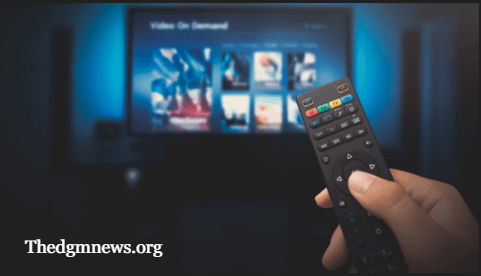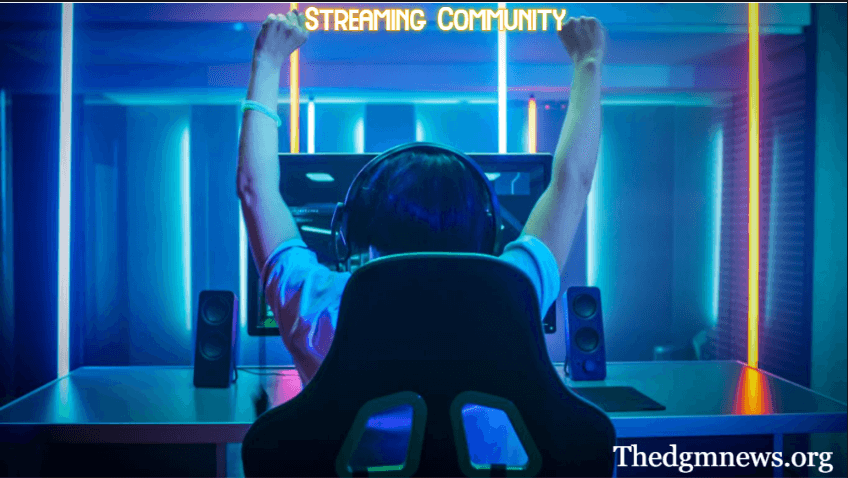Introduction
In the past decade, the entertainment landscape has undergone a dramatic transformation. Traditional television has taken a backseat as on-demand platforms like Twitch, YouTube Live, and Kick redefine how audiences consume content.
But behind the screens and beyond the algorithms lies a powerful force—the streaming community. More than just a group of viewers and content creators, this community represents a cultural shift driven by technology, creativity, and real-time interaction.
Whether you’re a streamer, a fan, or an industry observer, understanding the streaming community reveals key insights into the future of media, online engagement, and digital influence.
What is the Streaming Community?

The streaming community consists of broadcasters (streamers), viewers, moderators, developers, sponsors, and platform operators who interact on live-streaming platforms. These communities form around shared interests, ranging from gaming and music to education and lifestyle content.
Key Components of the Streaming Community
| Role | Description |
| Streamers | Individuals or groups who broadcast live content |
| Viewers | Audience members who consume, comment, and engage in real time |
| Moderators | Community managers who ensure rules and engagement quality |
| Developers & Platforms | Backend teams and companies (Twitch, YouTube, etc.) |
| Sponsors/Brands | Businesses that support or collaborate with streamers |
Together, these groups form an ecosystem that thrives on interaction, identity, and authenticity.
The Streaming Community Culture
1. Interactivity as Identity
One of the defining aspects of the streaming community is its real-time interactivity. Unlike traditional media, viewers are no longer passive consumers—they’re active participants.
- Live chat becomes a communal space
- Streamers react to comments, donations, and polls instantly
- Communities develop unique language, memes, and rituals
2. Loyalty and Support
Viewers often support streamers through:
- Subscriptions
- Donations
- Merchandise purchases
- Social media amplification
These relationships are built on trust, relatability, and consistency, creating a sense of belonging that rivals even traditional fan clubs.
3. Inclusive Yet Niche
Streaming communities often reflect the diversity of the internet:
- LGBTQ+ streamers have found massive support
- Regional language streams are growing rapidly
- Communities for mental health, study motivation, and productivity are thriving
Popular Platforms That Power the Streaming Community
1. Twitch
- Focus: Gaming, esports, lifestyle
- Key Features: Twitch Chat, Emotes, Sub Badges
- Revenue Streams: Subs, Bits, Ads
2. YouTube Live
- Focus: Varied content from music to education
- Integrated with YouTube’s video ecosystem
- Super Chats and Memberships enhance monetization
3. Facebook Gaming & Kick
- Appeal to niche and regional audiences
- Offering competitive revenue splits and discoverability
4. Discord (as a Backchannel)
- While not a streaming platform per se, Discord is crucial for:
- Post-stream discussion
- Community polls
- Role-based interactions
- Post-stream discussion
The Role of Technology in Strengthening the Streaming Community
AI and Automation
- Chatbots moderate content, welcome users, and offer commands
- Recommendation engines tailor content to viewer preferences
High-Speed Internet & 5G
- Low-latency streaming
- Real-time collaboration
Streaming Tools
- OBS Studio, Streamlabs, and XSplit empower creators with overlays, alerts, and transitions
Monetization Platforms
- Patreon, Ko-fi, and Buy Me a Coffee allow diversified income outside core platforms
Building and Growing a Streaming Community
1. Starting Out as a Streamer
- Select a niche (gaming, education, lifestyle)
- Use consistent branding (logos, overlays)
- Set and enforce community rules
- Stream on a consistent schedule
2. Fostering Engagement
- Run polls and Q&A sessions
- Celebrate milestones with giveaways
- Host “community nights” or collaboration streams
3. Using Social Media for Amplification
- Share clips, highlights, and teasers
- Use hashtags and engage with broader trends
- Collaborate with other creators
Challenges Faced by the Streaming Community
1. Burnout and Mental Health
Long hours, performance pressure, and audience expectations can lead to burnout. Many creators are now advocating for:
- Scheduled breaks
- Mental health streams
- Peer support systems
2. Platform Dependency
Streamers who rely solely on one platform risk:
- Sudden bans or demonetization
- Algorithmic invisibility
- Platform shutdowns
Solution: Diversify presence across platforms and create owned content hubs (e.g., personal websites, newsletters).
3. Toxicity and Moderation
As communities grow, so does the need for strong moderation:
- Use of automated filters
- Trained moderators
- Clear community guidelines
Economic Impact of the Streaming Community
The streaming industry is a multi-billion-dollar market:
- Twitch generated over $2.8 billion in 2023
- Top streamers earn six to seven figures annually
- Brand collaborations with micro-streamers are on the rise
Brands now see the streaming community as a powerful marketing channel due to its authenticity, reach, and engagement rates.
How the Streaming Community Boosted Indie Games
Games like Among Us, Valheim, and Lethal Company gained massive popularity thanks to exposure from streamers.
Mechanism:
- A popular streamer plays the game
- Viewers download and try it
- Other creators join in for collaboration
- Developers see spikes in sales and feedback
This feedback loop highlights the commercial influence of the streaming community.
The Future of the Streaming Community
1. More Interactivity via AR/VR
Virtual Reality streams are growing, allowing for:
- Immersive viewer experiences
- Interactive storytelling
2. Expansion into Education and Corporate Training
Streaming isn’t just for gamers anymore. Teachers, mentors, and professionals are creating:
- Live workshops
- Language lessons
- Career coaching sessions
3. Decentralized Platforms & Web3
New platforms may offer:
- Direct creator ownership
- Blockchain-based rewards
- Community-run governance
Conclusion
The streaming community is not just shaping entertainment—it’s reshaping culture. With its foundation rooted in authentic engagement, real-time interaction, and collective creativity, this community will continue to influence how we communicate, consume, and create content.
As technology advances and new platforms emerge, one thing is clear: those who understand and respect the streaming community will have a front-row seat to the next evolution of the digital age.
FAQs
What is a streaming community?
A group of streamers, viewers, moderators, and platform contributors who engage around live-streamed content on platforms like Twitch and YouTube Live.
How do you build a strong streaming community?
Consistency, authenticity, interactive content, strong moderation, and active social media engagement are key elements in building a thriving streaming community.
What platforms are best for live streaming?
Twitch, YouTube Live, Kick, Facebook Gaming, and even LinkedIn Live (for professionals) are currently among the most popular.
What are the benefits of being in a streaming community?
Networking, emotional support, entertainment, learning opportunities, and even monetization for creators.
How is the streaming community changing media?
It replaces passive viewership with real-time interaction, promotes creator-led content, and shifts influence from institutions to individuals.



